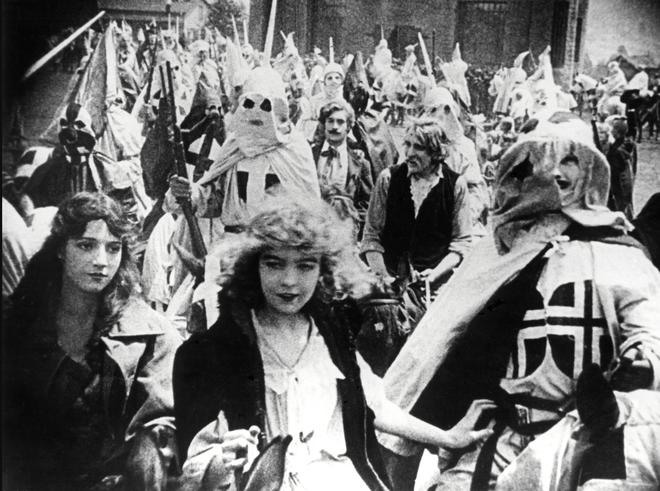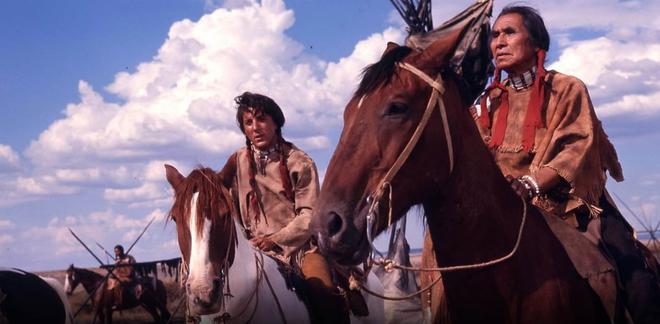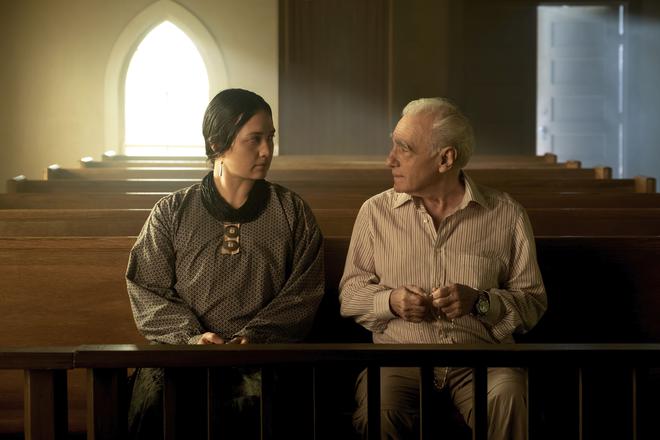In Martin Scorsese’s recently-released Killers of the Flower Moon, the auteur adapted his screenplay from David Grann’s book of the same name. The book and the film cover a series of real-life murders of wealthy Osage people that took place in Oklahoma back in the early 1920s after oil deposits were discovered beneath their land and they were given ‘headrights’ for the profits made from those deposits. The non-fictional tale digs deep into the systemic exploitation perpetuated by white people against the Osage nation.
This is similar to the way the indigenous peoples of the Americas have been portrayed by Hollywood, that is, predominantly controlled by white people. From starting as stock characters that turned into regressive stereotypes, the portrayal of Native Americans in films, predominantly Westerns, was negative. Only a little over 30 years ago did Native American filmmakers, through their works, provide the right representation for their culture. To understand this shift which is yet to reach its destination, we have to travel back in time to comprehend its evolution.
How a culture was vandalised
Even before the first feature film was made, heroic Indian figures were portrayed in inexpensive paperbound fiction stories called dime novels back in the 1860s. Then came the age of travelling vaudeville performances called the Wild West shows which were the forefathers of the Western genre that became one of the major cornerstones of the then still-young Hollywood industry. Shows such as Buffalo Bill’s Wild West Show popularised conflict between cowboys and Indians, and this romanticised fiction about the American frontier was misunderstood by many as actual history. The Native actors were either given unfriendly characteristics or profound humbleness which could’ve very well created the bloodthirsty savage/noble Indian dichotomy that long followed.
During the turn of the century, white directors and producers, who were making almost all Hollywood films, resorted to the ‘helpless Indian’ trope as seen in films like The Indian Runner’s Romance (1909) and The Red Man’s View (1909). The one that got noticed the most was celebrated filmmaker D.W. Griffith’s The Red Man and the Child (1908). He also made A Pueblo Legend (1912) and The Massacre (1912) where both films failed to show Native Americans in a positive light. The filmmaker would later go on to make the infamous, racist propaganda film The Birth of a Nation.

In 1914, filmmaker Theodore Wharton directed The Indian War Refought: The Wars for Civilization in America, a film that romanticised multiple battles in which Native Americans were massacred and buried in mass graves. It was advertised openly that the film was approved by the U.S. government and made under the direction of the War Department. It was also the time during which films stereotyped Native American attires by adding feathers to their hair or having elaborate feather headdresses.
After reducing their characters to mere stereotypes, Hollywood went a step ahead when they let white actors play Indigenous characters. Commonly known as ‘whitewashing’, this wasn’t unique to the Native American group as Hollywood was letting white actors play members of other racial groups like Blacks and Asians. Whitewashing, with regard to Indigenous characters, resulted in two issues — it impeded the right representation in the film industry and forced actors to take up stereotypical roles. Similarly, when synchronised sound made its way into theatres in the 1930s, the Indigenous characters in films were made to speak an alien-sounding language that often was not a genuine Native language. English dialogues were sometimes spoken backwards and later printed in reverse to make them sound “Indian”.
When the tide turned
Buffalo Dance and Sioux Ghost Dance, made in 1894, are two of the earliest films that feature Native Americans. Both films were shot at Thomas Edison’s Black Maria which was the world’s first film studio. According to the Edison catalogue, the performers in both films were genuine Sioux people and performers from Buffalo Bill’s Wild West show.
Interestingly, during the silent era, Native Americans produced films that narrated their own stories. In 1910, Nanticoke (Native American Algonquian group) film director James Young Deer made White Fawn’s Devotion: A Play Acted by a Tribe of Red Indians in America. It is said to be the earliest surviving film made by a Native American. These early years were when Native Americans were generally portrayed in a positive manner. Movie historian William K Everson wrote, “During this period the Indian became accepted as a symbol of integrity, stoicism, and reliability.” Deer went on to direct Tragedies of the Osage Hills (1926). Now presumably a lost film, it was the first feature about the Osage murders, preceding Martin Scorsese’s Killers of the Flower Moon by about a century.
After the 1960s, a post-classical variation of the traditional Western named the revisionist Western became the norm. It subverted the myth and romance of the traditional ones with character development and realism that resulted in no clear boundaries between good and evil that the traditional Western embodied.

Films like Little Big Man (1970) and Soldier Blue (1970) portrayed Native Americans as victims and white people as the frontier’s intruders. Other examples of revisionist Westerns that featured Native characters include The Deadly Companions (1961), Tell Them Willie Boy is Here (1969), Jeremiah Johnson (1972) and Buffalo Bill and the Indians (1976).
The 70s saw an incremental increase in barrier-transcending performances from Native American actors such as Will Sampson in One Flew Over the Cuckoo’s Nest (1975). The 80s also had an emergence of indie films with contemporary Native content like Powwow Highway (1989). But even then, Native American stories were being told by white filmmakers. It’s the success of titles in the 1990s like Dances with Wolves (1990) and The Last of the Mohicans (1992) that sparked new interest in the industry to make more films focused on Indigenous stories. In 1998, Native Filmmaker Chris Eyre directed Smoke Signals which was selected for preservation in the National Film Registry for being “culturally, historically, or aesthetically significant”.
Claiming their place
The representation of Native Americans has come full circle now and the industry has opened its doors to talented Indigenous directors which has resulted in more diverse and authentic stories. Igloolik Isuma Productions became the first Inuit-owned production company and the banner bankrolled the 2001 film Atanarjuat: The Fast Runner. The Canadian epic film was the first one ever to be written, directed and acted entirely in the Inuktitut language. It won the Caméra d’Or (Golden Camera) at Cannes and has since been a highlight of Indigenous cinema history.

The industry now features a host of Indigenous filmmakers like Sterlin Harjo (known for films like Mekko), Sydney Freeland (Drunktown’s Finest), Neil Diamond (Reel Injun) and Blackhorse Lowe (Chasing the Light). Similarly, many established actors have also come up to represent their heritage, like Wes Studi, Graham Greene, Amber Midthunder, Adam Beach as well as Tantoo Cardinal and Lily Gladstone who were a part of Killers of the Flower Moon.
But, according to Crystal Echo Hawk, founder and executive director of IllumiNative, an NGO, Indigenous representation in film and shows in Hollywood accounts for less than 0.4%. She also pointed out why this alarming number is a concern as TV and streaming are where people get their news from and it truly forms and shapes people’s opinions.
The UCLA 2021 Hollywood Diversity Report also pointed out that Native Americans made up 1% of acting roles and staff writers in the 2019 television season. In a 2018 article by The New York Times titled ‘Hollywood is as white, straight and male as ever’, it was reported that in 2017, 70% of the characters in the top Hollywood releases for that year were white while less than 60% of the population of the U.S. was white. This not only shows the disproportionate representation of non-white people but also shows how white actors have never faced a shortage of roles offered to them while Native Americans and other marginalised groups do.
For Killers of the Flower Moon, director Martin Scorsese and his team visited the Osage community in Pawhuska, Oklahoma. Realising he was making a white saviour story focused on a federal agent (that was to be played by Leonardo DiCaprio) rather than the human story of the people being murdered, Scorsese changed the script. In an article by Smithsonian Magazine, Marianne Bower, a longtime researcher, historian and producer who has worked with Scorsese on many of his movies, while speaking about the Osage community, said, “They invited us to dinner so that we could hear from them and hear their concerns. They got up and spoke and expressed their concern, told some stories of their own relatives as it relates to the story. At the end of the evening, after we had shared a meal and heard from them, they got up and they started giving us gifts. Then we all came to realise they are giving people. We used the gift-giving in the script — there are little details like that find their way in.” The Osage Museum and archives provided much of the set production for the film while the community’s members served as cultural consultants and helped with designs for maintaining the film’s authenticity.

Films have always played a significant role in shaping perceptions and for long, Hollywood has predominantly shown Indigenous people as extinct cultures trapped in the past. New-age filmmakers are taking these largely negative narratives as a challenge to oppose years of misrepresentation. Until Taika Waititi won an Oscar for Jojo Rabbit a few years back, singer-songwriter Buffy Sainte-Marie was the only Indigenous person to have ever won an Oscar. At the 2020 Oscars, Waititi spoke recognising the Indigenous people upon whose land Hollywood is now seated. “The Academy would like to acknowledge that tonight we have gathered on the ancestral lands of the Tongva, the Tataviam, and the Chumash. We acknowledge them as the first peoples of this land on which the motion pictures community lives and works,” he said. “To all the Indigenous kids throughout the world who want to do art and dance and write stories. We are the original storytellers and we can make it here as well.”







